
Experience Nesset
Provided by:
Nesset Vekst

Introtext in English here...

Provided by:
Nesset Vekst

Introtext in English here...









Here, inside Langfjorden by the Eidsvågelvas run out you can see the beautiful Nesset church. It is a long wooden church built in 1878 and designed by the renowned architect H Nissen. You should notice the slightly unusual construction of the tower. The original church tower was higher and sharper, but it was destroyed by the weather and wind and was taken down in the 1930s and replaced in a style in keeping with the rest of the church. The church has amazing acoustics and many people come here for concerts including through the Nesset Music festival. Internally you can see signs of the original main church which was from Rød. The alter and pulpit date from around 1650 and were brought from the church in Rød. The church got a new pipe organ in 1998. Bjørnstjerne Bjørnson’s father Peder Bjørnson was the priest in Nesset from 1837 until 1853, his picture hangs in the sanctum. In Bjørnson’s time it was the stave church in Rød that was the main church in the parish. It was located directly across the fjord from Nesset vicarage. Three cemeteries belong to Nesset church.

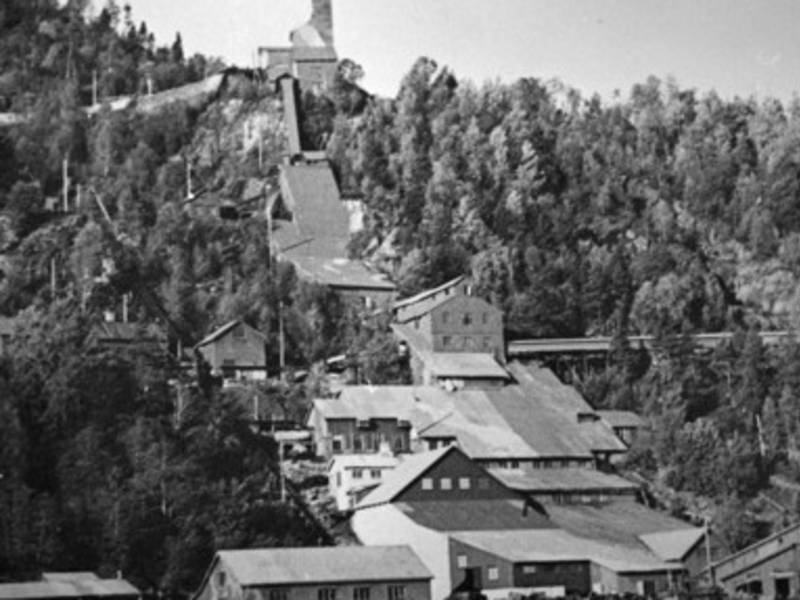
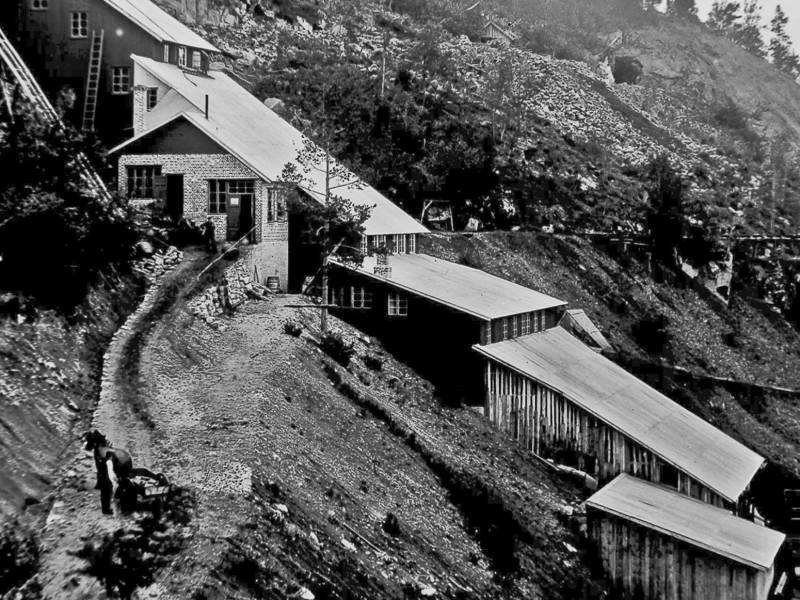
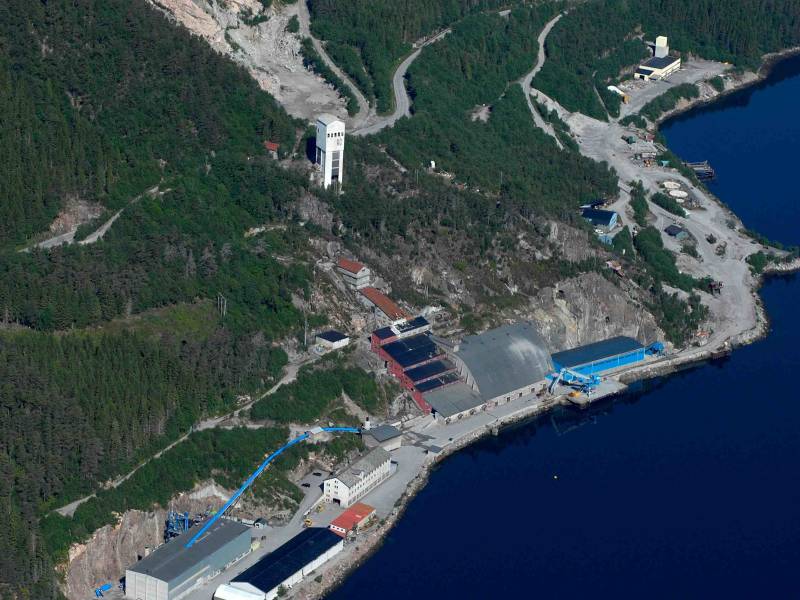

Here at Rødsand, the characteristic white ore towers tower over a 170 year old mining and industrial history. The first known mining operation took place in in 1877 with the first shipload of ore from Rødsand to the USA. Large scale mining didn’t start though before the prolific businessman Sam Eyde along with other investors founded the company AS Rødsand Gruber in 1910. Ole Øverlie had the responsibility for building up the new business with a power station and a factory for the production of finely ground iron ore. In order to produce one ton of iron ore it takes around 4, 5 tons of rock. The residual products eventually became valuable commodities such as aggregate for use in construction. In large, the business of AS Rødsand gruber followed developments in Europe through two world wars and economic up and downturns. Rødsand gruber was closed down in 1982 with the loss of 167 jobs. But much of the mine’s history has been collated by enthusiasts and can be seen at the Raudsand mining museum. Aluscan was established at the mining area in 1989 by Kjell Olav Sjøli and Gerhard Eide. The aim of the company was to reuse and refine the waste from the aluminium industry. Today the company has foreign owners and employs between 60 and 70 people in Rødsand and Rød.




Here along the road fv62 between Eidsvåg and Eidsøra there have over the years been discoveries of Kavlvei in many places. A Kavlvei is a road consisting of wooden posts laid down in the marsh to make it easier to cross. The width of these kavlvei suggest that it was used as a riding/sledge road and as a boat drag between Langfjord and Sunndalsfjord to avoid the unpredictable Hustadsvika. Kavlveier are known in many places in Norway. They are often between 0,5-2 metres wide and constructed of whole or split logs laid over a marsh, preferably with foundations made of twigs or sand. The location in the marsh has led to the logs being well preserved. The first and largest logs were discovered here in 1932 during ditch digging and the cultivation of the marsh land at Toven farm. Later, other parts of the construction were uncovered during ditching and plowing. An excavation in 2014 showed that parts of the Kavlvegen were constructed much earlier than first estimated. Possibly as early as the Bronze age 3000 years ago. At that time, the sea would have been at a level 7 to 10 metres higher that it is today and it was possible to sail up the Eidsvåg River to what is today known as Skipabrekka.






Welcome to Eidsvåg! The village is in the inner part of the municipality of Molde and was the administrative centre of the former Nesset municipality. Eidsvåg has good services with a nursery, school, volunteer service, and a care home. The village also has a village hall which is used for many different activities and offers many outdoor activities in the mountains and the fjord. If you wish to stop for a shopping trip, you will find everything you need in the shops in Eidsvåg; Bestes Bakery and café which sells traditional baked goods and quality food from local producers, the florists Botanic dream. If you are passing through and need to stop at a petrol station then at YX at Stubøkrysset you can fill both your tank and your stomach. In the centre of the village you can also find quick charging points for electric cars next to the Bunnpris supermarket. And if you require overnight accommodation then the Eidsvåg Fjord hotel is the place to stay. At Stubøen in Eidsvåg, right next to where the petrol station stands today, a nine year old Bjørnstjerne Bjørnson witnessed the last beheading in Romsdal. Bjørnson wrote about this event in «An ugly childhood memory». That beheading in 1842 made a lasting impression on Bjørnson and it took him nearly 50 years to write about that terrible childhood memory. ‘’I heard the captains terrible pistol, then a noise like chopping a giant turnip, when I looked back there was just a bone there and, a little way in front of the body was the head laying there gaping as if gasping for air”



You are now standing on historic ground! It was right here on the evening of the 28th February 1756 that Tjellefonna the biggest landslide in Norwegian history occurred. 15 million cubic metres of stone came down from a height of 400 metres. As they came down the mountainside and into the sea the stones were pulverized as if they were in a crusher, which only increased the speed of the landslide as it reached the sea. Three large tidal waves took the lives of 32 people along Langfjorden and the destruction left by the waves was enormous. The waves reached a height of 30 to 40 metres and in total destroyed 168 buildings and 196 boats. Woodland, roads, boatsheds and quays along the land also disappeared. The whole of Langfjorden was bubbling and the highest wave was recorded at Veøya 25 kilometers west of the landslide at a height of 15 metres over the flood line. Geologists give two possible explanations for the landslide of 1756. One is that there was an earthquake prior to the landslide. The second and most likely explanation is related to the weather conditions. The landslide occurred after a mild and unusually wet February. The heavy rain led to increased water in mountain springs which in turn loosened rocks on the mountain and released the landslide. At Tjelle, to the eastern part of the landslide area you can find an information board where you can read more about Norway’s largest landslide.







Here in Finnset, at the top of Eikesdalen is the start of the Aursjø road. A 55 kilometre long construction road that was built in connection with the large scale power plant development in Eikesdal. The road ends up in Litldalen in Sunndal and is an exciting journey over wild mountains, which in the opinion of many is wilder and more severe than even Trollstigen. You can experience the road by car, cycle or on foot. The road goes over Finnsetlia through steep terrain, many hairpin turns and a 360 degree tunnel. At Aurstupet you will pass the road’s highest point which is at 947 metres above sea level and is a fantastic viewpoint over Eikesdal and a popular place for base jumping. At Aursjødammen, 860 metres above sea level is the Aursjø cabin. A tourist association cabin which is manned from June to September and self-service with a standard DNT key for the rest of the year. The road runs through demanding mountain terrain and ends with a breezy ride down Hallarvasslia before ending in Litledal in Sunndal municipality. The recommendation is to drive carefully, show consideration to fellow road users and take your time in order to experience the fantastic nature and the area’s rich cultural history. The road company Aursjøvegen AS describes the trip over the mountain as “an adventurous journey from fjord to fjord over wild mountains. Aursjøvegen gives you the best of what Norway has to offer in terms of spectacular stretches of road. We wish you a fantastic journey”



If you drive through Eikesdaklen then you will drive past a small church on a hill by Oppigard in Eikesdal. The church was built in 1866. Before this the parish belonged to the Sira church in Eresfjord and residents of Eikesdal had to row over Eikesdalsvatnet for all church matters. The parish priest however finally got his own church, even if at the start there were only 4 services a year and the journey from Nesset vicarage was often long and exhausting. With their own church the people of Eikesdal were able to bury their dead in their own church yard and christenings and wedding ceremonies could be held in their own church. Kapellet is a timbered long church built in 1866, designed by Jacob Wilhelm Nordan. He designed over 70 churches in this period. The builder was Ole Olsen Nørstegard and together with carpenters from Lesje he built the church in only 5 months. Eikesdal church is small and intimate with 100 seats; it has light colours and a nice atmosphere. They hold services here 8 times a year and taking the population into consideration the church is well supported. The wooden organ was replaced with an electrical one in 1982.




Marsdalsfossen waterfall is one of the region’s biggest tourist attractions. With a total fall height of 655 metres it is Northern Europe’s highest waterfall. In 1970 it was decided that the waterfall should be developed and that the water should be diverted over to Rauma and power station developments. The protests against the development led to the world’s first nature conservation action using civil disobedience. The protest was an important ideological nonviolent protest to protect untouched nature and was the start of the environmental movement in Norway. Amongst the several hundred protesters were the philosophers Sigmund Kvaløy Setreng, Arne Næss and the politician Odd Einar Dørum. The protests were also supported by the local communities of Eikesdal and Eresfjord, who are now fighting to get the waterfall back. Without the Mardøla protests the waterfall would not have been able to flow every summer from the 20th June to the 20th August. Follow the signs along the road at the end of Eikesdalsvatnet and you will arrive in Marsdalen where you will have access to parking, a kiosk, toilet and a path up to the waterfall. The path up to the waterfall is around 2 kilometres long. If you want to get close to the effervescent waterfall we would recommend you take your rain jacket with you. Enjoy the trip!




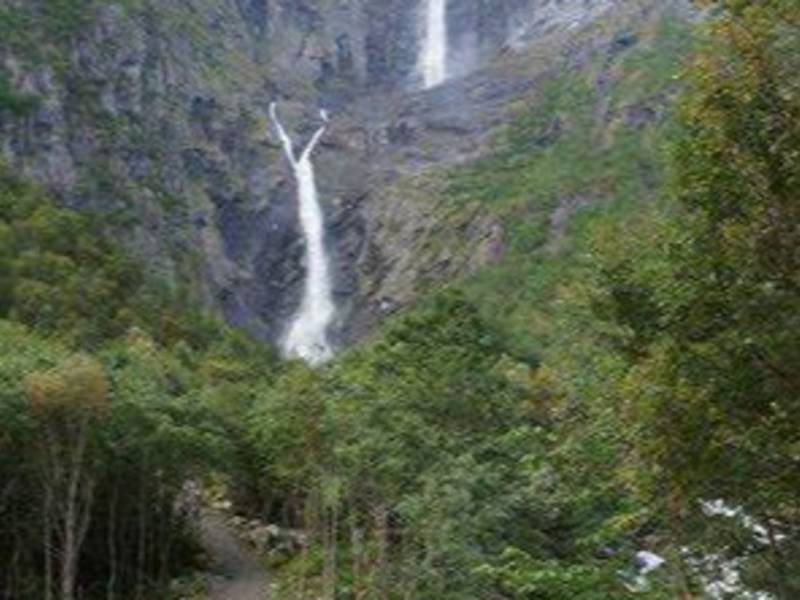


The village of Eikesdal is a pearl of nature which lies at the south end of Eikesdalsvatnet. If you are peckish then we would recommend that during the summer season you stop in at the Eikesdal Inn. But should you wish to stay longer then the village also has a campsite and numerous cabins for rental. There are also good fishing options, boat hire and great hiking terrain in both the high mountains and at low land. The most well-known attractions in Eikesdal are Mardalsfossen and Aursjøvegen. Mardalsfossen waterfall is regulated but runs from the 20th June to the 20th August. The walk up to the waterfall from the car park in Mardalen is around 2 kilometres and it takes around half an hour to walk the path right up to the waterfall. The Aursjø road runs between Eikesdal and Sunndalsøra and is an attraction in itself. The highest point on the road is at 947 metres and surpasses what most of Norway can offer in terms of a spectacular stretch of road. You can experience the road by car, bike or on foot. The river Aura is as good as dry after large scale power station developments. But after 50 years this is going to change, pressure from the people means that that there is to be a minimum flow in Aura and that the water will soon be back to Mardalsfossen waterfall. You can find more information about this at the Eikesdal Inn. www.portalnesset.no





You are now at Eikedalsvatnet which is the largest natural lake in the county of Møre and Romsdal. Eikedalsvatnet lies at 22 metres above sea level, is 18 kilometres long and stretches from Øverås in the North to Eikesdal in the South. Three large power stations Aura, Takrenna og Mardøla have taken water away from the valley. As compensation, they had to build a road alongside the lake. The road was opened on the 16th November 1990, this made a huge difference to the residents of Eiksdal who up until then had been reliant on the ferry. Today the ferry has been converted into a cruise boat and can be chartered to enjoy the best of the wild and beautiful nature that Vestland has to offer. Around Eikesdalsvatnet there are mountain tops of between 1500 and 1800 metres high. The steep mountainsides leave the area exposed for landslides and much has been done to secure the road by the construction of tunnels and overhangs. Alongside the lake you will drive past the farms of Vike and Øvre Vike. On the other side of the lake are the Hoem and Hoemsetra farms. At Hoem you will find Hoemsbu which is a self-service tourist cabin run by the Romsdal tourist association. Along the lake from Øverås and right up to Finnset you drive through rich deciduous forests and Northern Europe’s largest hazel forest. Take the twenty kilometre tour along the length of Eikesdalsvatnet to discover the nature and possibilities of Eikesdal.




Welcome to Vistdal! A beautiful village which stretches from the fjord and Vistdalsbukta along the River Visa up to Vistdalsheia. The village is encircled by powerful mountains. Vistadal has rich and varied walking terrain both in summer and winter. If you want to explore the area we would recommend you take a trip into the store for some tips. In Vistal you can chose between many different hikes of varied lengths, difficulty and steepness. Here in the centre of the village you can find the school, nursery, old folks home, co-op store and Visdal church. With a short distance down to the sea it is also easily accessible for those who arrive in Visdal by boat. The main industry in Vistdal is agriculture, but other businesses also have a good foothold in the village. Hanset sand and Romsdal stone industry are both known locally and nationally. Many other smaller businesses are also run from Visdal. If you would like further information about the village then we recommend you take a trip into the store. Amongst other things you can buy fishing permits for salmon fishing in the Visa River. Whilst you are there ask for some Sekkjepåse! a traditional Norwegian food from Visdal which is today eaten at celebrations. We would also recommend a stop at Vistdal camping which is located in an idyllic spot on the edge of the river. They offer cabins of different sizes and have plenty of room for motorhomes and caravans. www.portalnesset.no





We have now arrived at Kavli Moen Farm, which is the childhood home of Fred Kavli; physicist, inventor, business man and philanthropist who is considered by many to be the Alfred Nobel of our time. Here under the starry sky in Eresfjord he developed a curiosity for the universe which led to a lifelong love of science. The Farmer’s son grew up in Eresfjord and emigrated to the USA as a newly qualified engineer in 1956. After some years of working for others he established the Kavlico Corporation, a company which developed into the world’s leading producer of sensors for cars, airplanes, space craft and other industries. In 2000 he sold his life’s work for 2 and a half billion kroner and created the Kavli Foundation. Today the foundation has 17 research institutes around the world and funds the Kavli prize in Science for contributions to Astrophysics, Nanoscience and Neuroscience. The prize has been awarded every other year since 2008 by his Majesty the King. Today the Kavli Foundation is working with the Romsdal museum to develop Kavli Moen into the Fred Kavli Science centre. The programmes and activities which are offered at Kavli Moen are within the areas of education, science, innovation and entrepreneurship. Fred Kavli had a close connection to his family and Eresfjord village. Even though he became an American citizen in the 1960s and considered himself American, he chose Eresfjord and the cemetery at Sira Church as his final resting place. Fred Kavli passed away on the 21st November 2013 in Santa Barbara, USA he was 86 years old.





Welcome to Eresfjord! Eresfjord is known for its high mountains and fantastic outdoor experiences. Here you can hike both in the summer and winter, cycle, paddle on Eikesdalsvatnet, fish in Eira or swim in the sea. There are many things to do and you can find out about even more activities by contacting the tourist information at the store in the village. Eresfjord is the region’s cycling village. The former professional cyclist Kurt Asle Arvesen has been a good ambassador and driving force for cycle sports. Every summer around 100 colourful cycles are placed around the village, and many cycle races are arranged. The oldest race is the ‘village loop’, which was arranged for the first time in 1977. The village loop is 13,5 kilometres and you can hire bikes at the Co-op. Eirawater is produced in Eresfjord and is worth tasting. It is natural mineral water from the Eira Source, a 10 thousand year old moraine of gneiss rock. These unique conditions create the perfect natural water filter and lead to the water with the lowest mineral content on the Norwegian market. Nauste is also worth a visit if you are in the area. Nauste was originally the centre before Eresfjord and Eikesdal. It had a steamship quay, village store, bakery, post office and a hotel. www.portalnesset.no





Here you can see the Sira church in Eresfjord, which is clearly visible across the mountains and open fields. The river Eira runs behind the church and is popular with salmon fishermen. The story of how the church came to be built in Sira goes; there was to be a new church built in the village, however, what was built during the day was destroyed at night. The residents of Eresfjord believed that the destruction was the work of higher powers. Therefore, they threw a log into the river and decided that wherever the log came ashore is where the church should be built. And that is how the church came to Sira. Sira church was referred to in 1426 as Sirin Kirkiu. It was first a simple stave church and was later developed into a cross shape with arms to the North and South. At the beginning of the 1700s the church was dismantled and a wooden church was built. Throughout the 1800s there was a big population increase in the country. Many churches became too small and in 1851 a law was passed that quantified the relationship between the number of seats in a church and the population of the parish. In Nesset the relationship was 3 to 10 and the law was soon implemented in churches across the land. The 8 sided church that stands here today is from 1869, was built with logs and has a colourful interior. The church was built according to plans by the German architect Heinrich Grosch. It also has an organ that puffs distinctively when it starts.



The River Eira is a part of the 87 kilometre long Aura watercourse that starts up at Aursjøen, runs down to the River Aura in Eikesdalen, out to Eikesdalsvatnet in the South and via the River Elva out to Eresfjord in the North. Through power developments in Aura, Takrenna and Mardøla the natural water flow in the water course has reduced by 70%. Eira is known for its fantastic salmon fishing, and there are many tales; of servants who complained when they were served salmon for dinner many times in a week, about salmon that was used for fertilizer on the fields and about salmon used as animal feed. The great salmon adventure of Eira started when the English came during the 1850s. The salmon villas of today ‘Siramoen and Engelskhuset’ were built at that time to accommodate the English salmon fishermen. They caught a great number of large salmon and the largest registered salmon caught in Eira weighed in at a whole 36 kilos. The River Eira is still a very good salmon river. The salmon fishing season is from the 1st June to the 31st August. If you want to try your luck fishing then you can contact www.inatur.no for fishing permits. You can find further information at the shop in the village, where during the salmon season you can also watch the Eira salmon on a flat screen.




Here along the mountainside of the FV660 road there are many climbing areas, there are climbing guides with detailed descriptions of the difficulty of the individual routes. The nearest small boat harbour is in Håhammaren, which is the starting point for smooth rock climbing in Eresfjord. There is parking in Håhammaren and the entry to Sjakkmatt, Torvløysa and all the other climbing routes are just 10 metres away! From here and beyond the FV660 towards Eidsvåg you can also find the climbing areas Ulvesvaet, Forklesvaet og Utkleiva. All of them are signposted. From Håhammaren past the small boat harbour it is 1, 8 kilometres to the shop in Eresfjord. In the middle of the village of Eresfjord you will find Goksøyra which is the King amongst climbing mountains. There are 12 routes here, 8 which are on the westside. Husmannes is a peak right under the west wall. Anmarsjen via Husmannen takes around 2 to 3 hours! The natural start for the climb up the west wall is to park at Korsen the highest point of the road right under Husmannen and Goksøyra.





You are now in the village of Bogge, the gateway to the rock carvings. Follow the signs and drive the farm road down to the sea. Park below the farm and follow the information signs and stairs through the rock carvings. There are toilets in the car park. The rock carvings are Møre and Romsdal’s biggest collection of prehistoric rock art. All together there are 80–90 carvings registered in the 3 fields. The two upper fields have animal motifs and are hunter’s art from the Stone Age, estimated to be between 5000 and 6500 years old. The third and lowest field has boat motifs and is around 2500 years old dating from the transition from the bronze to the Iron Age. The carvings are signs and symbols carved into the mountain at a time when people lived from hunting and trapping. The carvings could be a reminder of good trapping places and rich hunting grounds, or magical pictures which gave the hunters power over the animals they wanted to catch.







Nesset vicarage is a good starting point for walks both down to the sea and up to the mountains. Prestneset is a unique outdoor area with its beautiful nature and special historic cultural background. From the starting point in the yard at the vicarage, cross the road and follow the signs down to the sea. On the way down you will pass the burial mounds and building remains of amongst others Romsdal’s first permanent school. Right down by the sea side is the Tjelle stone, which was washed ashore from Tjellefonna on the 22nd February 1756. The nature and cultural trail at the vicarage has 11 points with simple explanations. Bjørnsonstien is a family friendly path which starts by following the FV road from the vicarage for around 200 metres then inwards towards Eresfjord. The path is 1,5 kilometres one way and you return the same way. This was the old road between Eidsvåg and Eresfjord during the 1800 and 1900s. Today the route is mostly used as a walking area with around 10 000 visitors a year. Prestaksla has the same starting point as Bjørnsonstien. Follow the signs and you will experience a great walk through Prestkala nature reserve up to a fantastic view point. Eidsvåg sports club have improved the path with stone steps in the steepest parts and stepping stones and walkways over the marshiest areas. The distance to the top is around 5 kilometres with an elevation of just over 500 metres.






The mill house dates from around 1840. The mill was important to a big farm. Around 1960 the mill was restored with gutters and grinders and in 2017 the grinder was restored again and it is still possible to grind corn when the water flow in the stream is good. Previously, the water reservoir for the storage of water was up at Prestesetra/Prestaksla. It was known as Teppingsmyra.

This house was of old called the bake house, but we call it the eldhus. It was probably built at the end of the 1700 century or the start of the 1800s. At that time there were two open chimney pits, one in each room. The inventory that is there today was in place around 1900. Here there would have been a bread oven, corn dryer and large cooking pans. Previously, the eldhus was the farm’s utility room and the outermost room was used for butchery. The stone oven has been restored and is still in use. The oven can bake around 18 loaves of bread at a time.

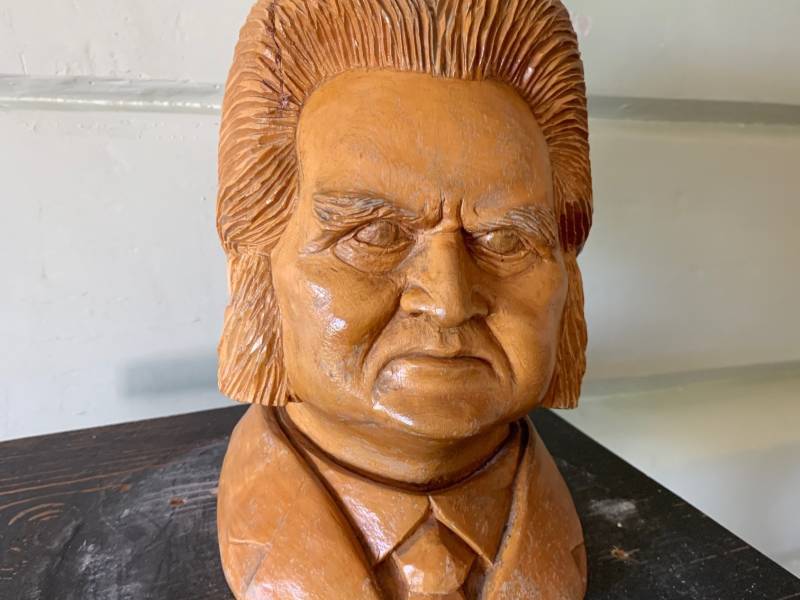

The age of this house is hard to determine, but it was probably built sometime between 1757-60, demolished and rebuilt again between 1766-75 and demolished and built again with a loft around 1850. The Borgstua was the public room at the Vicarage. It was used as a courtroom, boy’s room, school room, meeting room and later as a carpentry workshop. It was also used for confirmation instruction up until 1927. Bjørnstjerne hid himself in here when he was in trouble and it was here that he learnt the art of storytelling. It was here in the Borgstua that the first interrogation of Per Hagbø took place. He was convicted of murder in 1841 and later executed. Bjørnson wrote about this in “an ugly childhood memory”. The 9 year Bjørnstjerne was witness to the execution on the 29th January 1842 at Stubøen in Eidsvåg. Throughout his adult life he campaigned against the death penalty.






Build around 1815-16. The local people owned and had responsibility for this house. The house was the official building at the vicarage and Kings, Bishops and other clergy and officials lodged here when they were visiting. The priests had to provide stately accommodation and service to the King and his envoys. In 1685 King Christian V visited and in 1704 King Frederik V passed through. Later King Harald V was at the vicarage many times both in 2003 and 2010. When the priest Thorsen employed a tenant in the 1900s, the house became a tenant house and that was the case right until 1971. The census of 1900 shows that there were 17 people living in the Herrestuen. It looks like Bjørnstjerne tried to scratch his name into a beam on the stairs. The furniture and inventory have been collected by people in the municipality.




In the yard there are two stabbur, which were buildings used to store food: Prestestabburet and Tiendestabburet. The Priest had the southerly one and the northerly one was used in connection with the collection of tithe or taxes. Taxes that had been collected from the parishioners were stored here. Tithe dates back to the reign of Sigurd Jorsalfar and Magnus in the early middle ages. A tenth of what the farm produced had to be paid as a “church tax”. The tax was originally split into 4 parts for; the bishop, priest, church and the poor (peasants). After the reformation in 1537 this was changed and the bishops in the Catholic Church lost their portion to the King. Eventually there was also a dispute over the peasant tax and this was partly taken over by the King. Tax was up until 1801 exclusively paid as produce in the form of corn, butter, cheese, meat and other negotiable goods. The Tiendstabburet eventually lost its function when the presidency laws came in in 1837. Later, when there were tenants at the farm they used the southerly stabbur, whilst the priest used the northerly one. The Northern stabbur is the oldest building on the farm build around 1630.



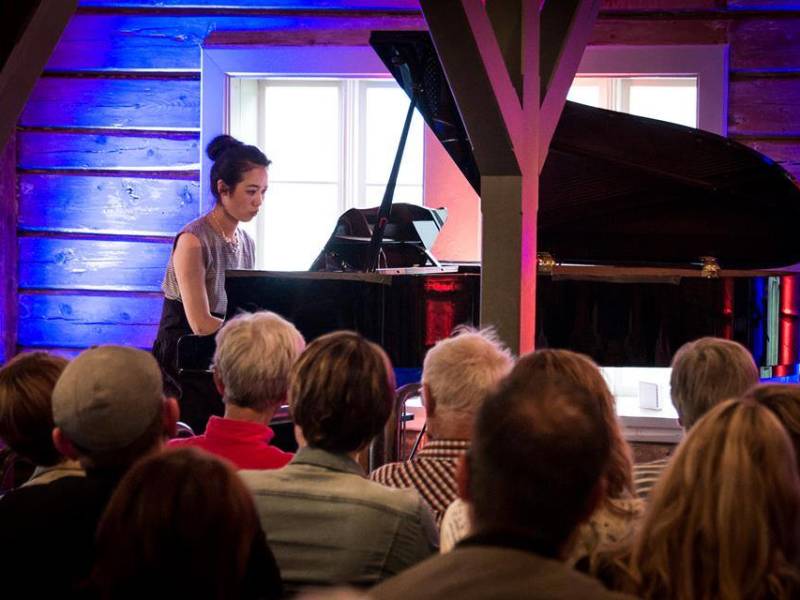

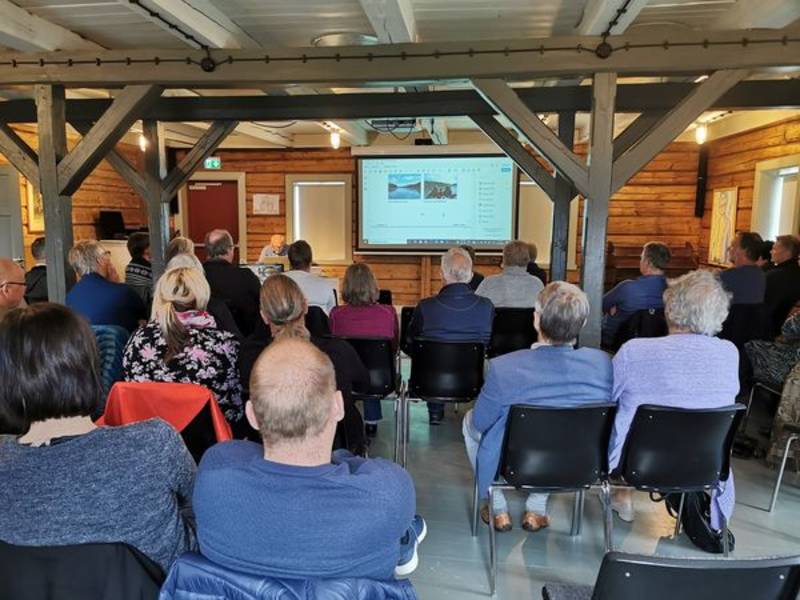
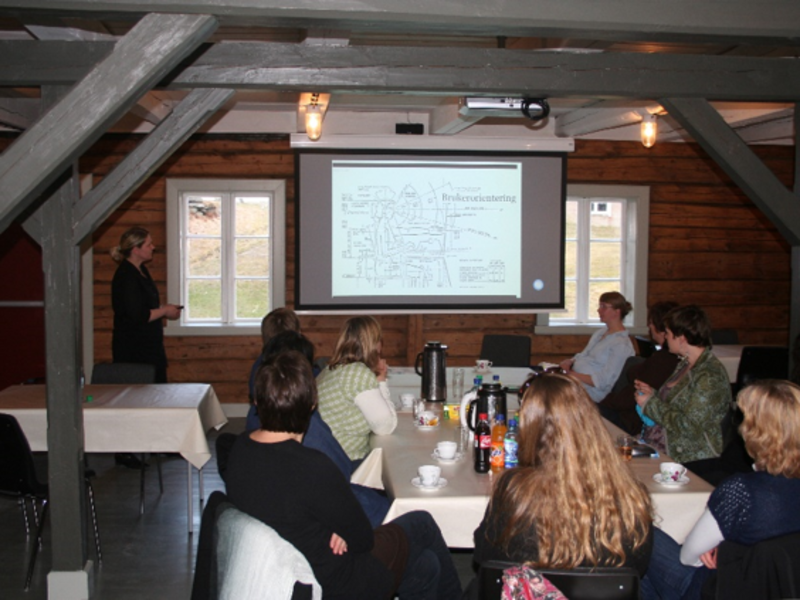

Earlier the animals on the farm were kept in different buildings. But when the parish priest Thorsen came to the farm in 1896 the buildings were dilapidated and he built a new operations building which was completed in 1902. He used local labour, so the funds he received in support of the building went back to the community. The building was in use right up until when the last tenants moved out in 1971. After that the building was rented out for use in animal husbandry until 1990. The barn has now been converted into a cultural house and museum with training and function rooms. If you want an authentic and unique venue in an historic environment then the barn could be the right place for you! For further information on renting the venue contact the Romsdal museum. The yard consists of 9 listed buildings and extensive restoration works have been carried out in collaboration with the county antiquarian. In 2010 Nesset vicarage was awarded the St. Olav’s Rose, a Norwegian cultural heritage quality mark. The quality mark represents unique experiences rooted in Norwegian heritage. The prize was awarded during a royal visit on the 29th August 2010.

The old main building from 1702 that stood here when the Bjørnson family came to Nesset was in such a bad state that Peder Bjørnson sent a letter to the King with an application to be allowed to build a new one. He applied for a loan of around 1200 spesidaler and after much toing and froing he finally received the money and the building began. The new house was completed in 1846. Although small building works were carried out right until 1896, when parish priest Thorsen undertook some improvements. Since then the house has been modernized many times. On one of the windows on the 1st floor Bjørnstjerne has scratched his name with his mother’s diamond ring. The main house is now restored and houses a museum used to convey the Bjørnson history, the history of the vicarage and Romsdal’s literary history. The main house is in a typical empire style with clean simple lines inspired by antiquity architecture. The Romsdal museum bought the yard at the Nesset Vicarage using Norwegian Church endowment funds in 2019. The fund has in later years sold off many of its vicarages after the residency requirements for priests were repealed in 2015.




Now you have arrived at “one of the most beautiful farms in the land, which lies between two fjords with green mountains above them, waterfalls and farms on the opposite beach, rolling fields and life at the bottom of the valley, and out along the fjord, mountains with headland after headland shooting out into the sea with a large farm on each one” That is how Bjørnstjerne Bjørnson describes his childhood home in his book ‘Blakken’. Bjørnstjerne was born on the 8th December 1832 at the Bjørgan vicarage in Kvikne in Østerdalen. When he was 5 and a half his Father got the calling to be a Priest in Nesset and the family moved here in 1838. Bjørnstjerne Bjørnson had his first literary breakthrough with the farming tale «Synnøve Solbakken». As a writer he was versatile and in 1903 he won the Nobel Prize for literature. Bjørnstjerne visited Nesset many times after his family had moved away from here and in many of his poems you can find people, places and events from Nesset. In a letter to Alexander Kielland in 1902 he wrote “I am a Romsdalener. That is where I came from, I have been defined by this land and people…and this is where I will live until I die”. The Romsdal museum has a guide at the vicarage during the summer season.





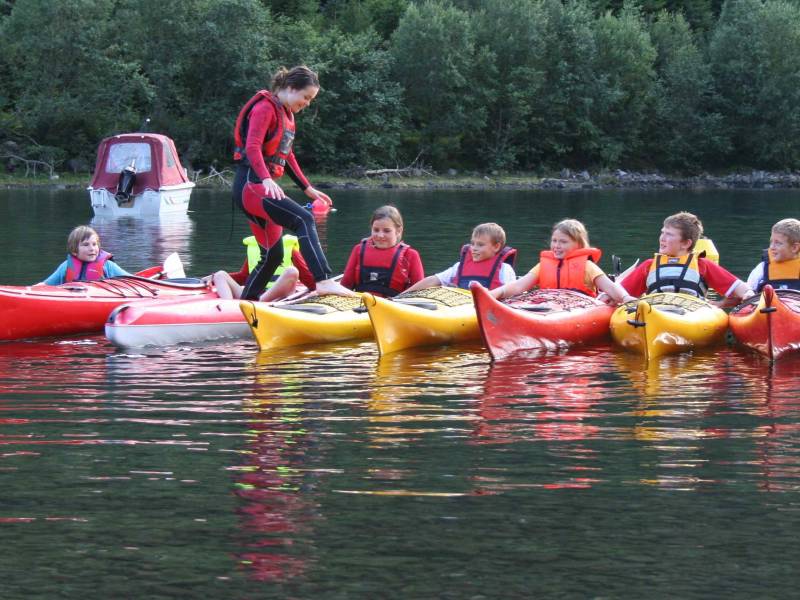
If you need overnight accommodation and want a dip in the sea then the Eidsvåg Fjord hotel and swimming beach next to the hotel are just the place. The Eidsvåg Fjord hotel offers a restaurant with a pub, meeting room and rooms with cable TV, Wi-Fi and bathrooms. Some of the rooms also have small kitchenettes. The staff are also able to assist you with kayak and canoe rental for paddling on the fjord, as well as being able to advise you on hiking options in the area. The swimming beach is a part of the Eidsvågleira, a wetland area with rich bird life. The bathing area is fitted with a ramp so that everyone is able to access the sea. If you want to experience the sea up close then it is also possible to rent canoes and kayaks. Further information about this can be found on notices at the beach. There are also toilets available during the summer season.